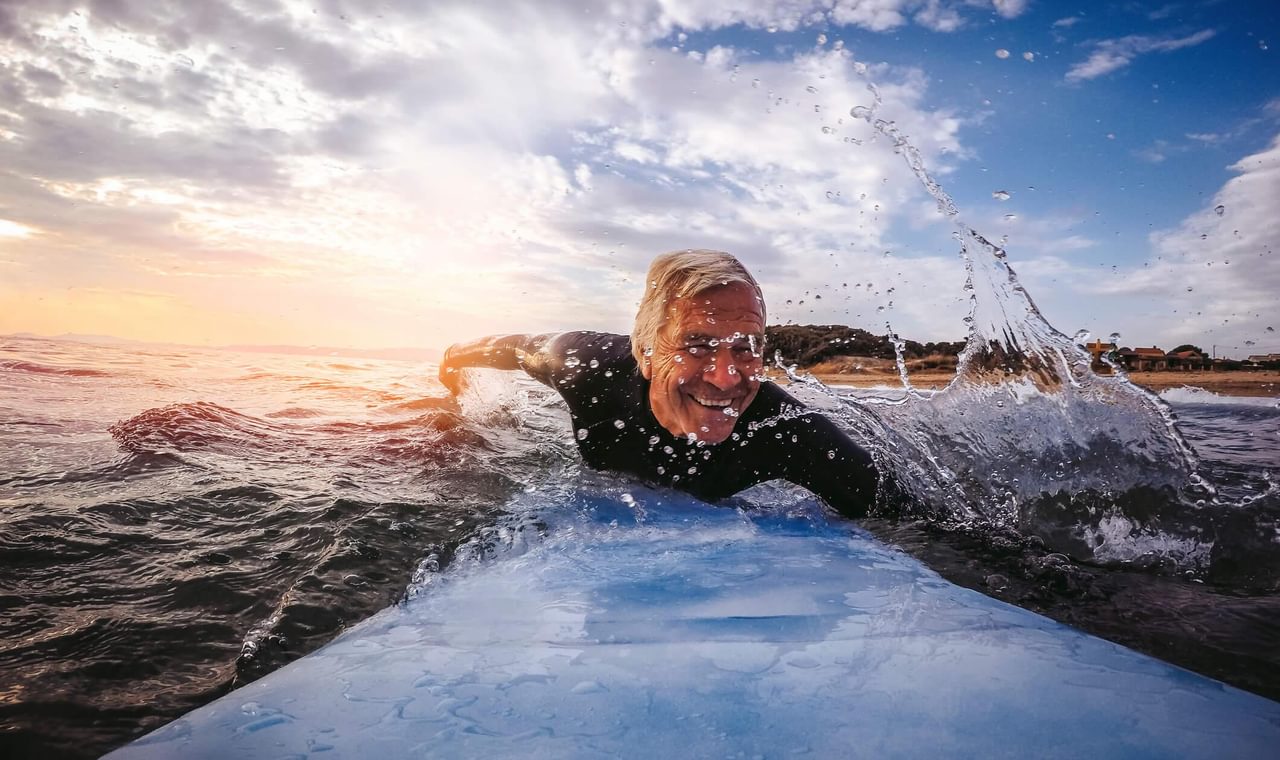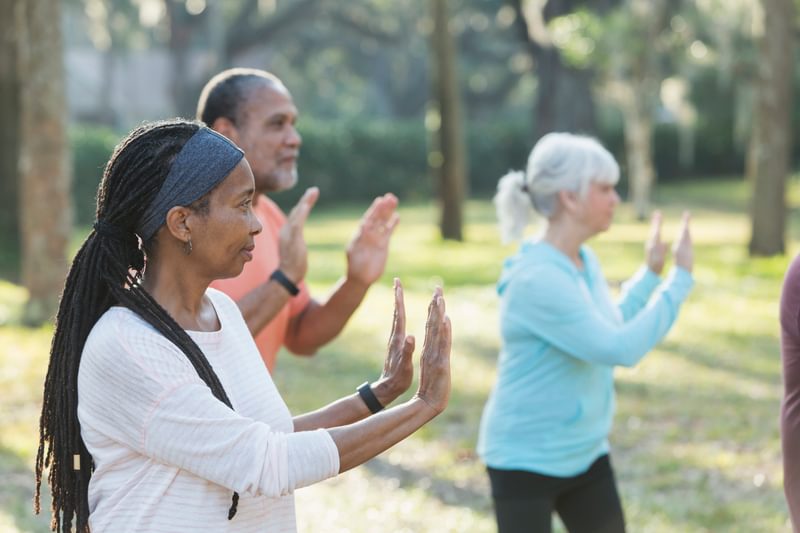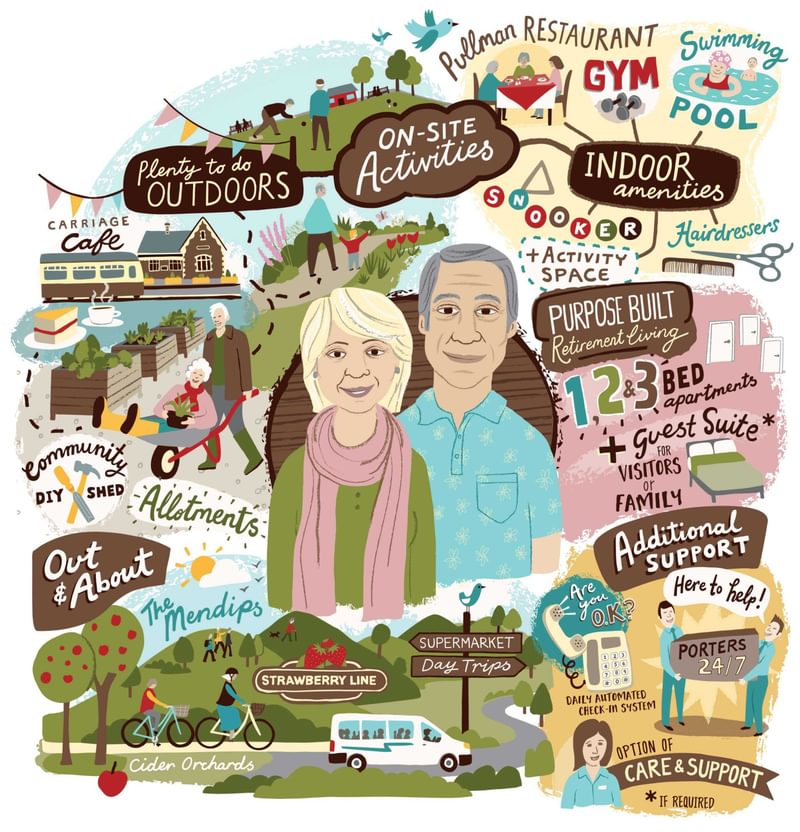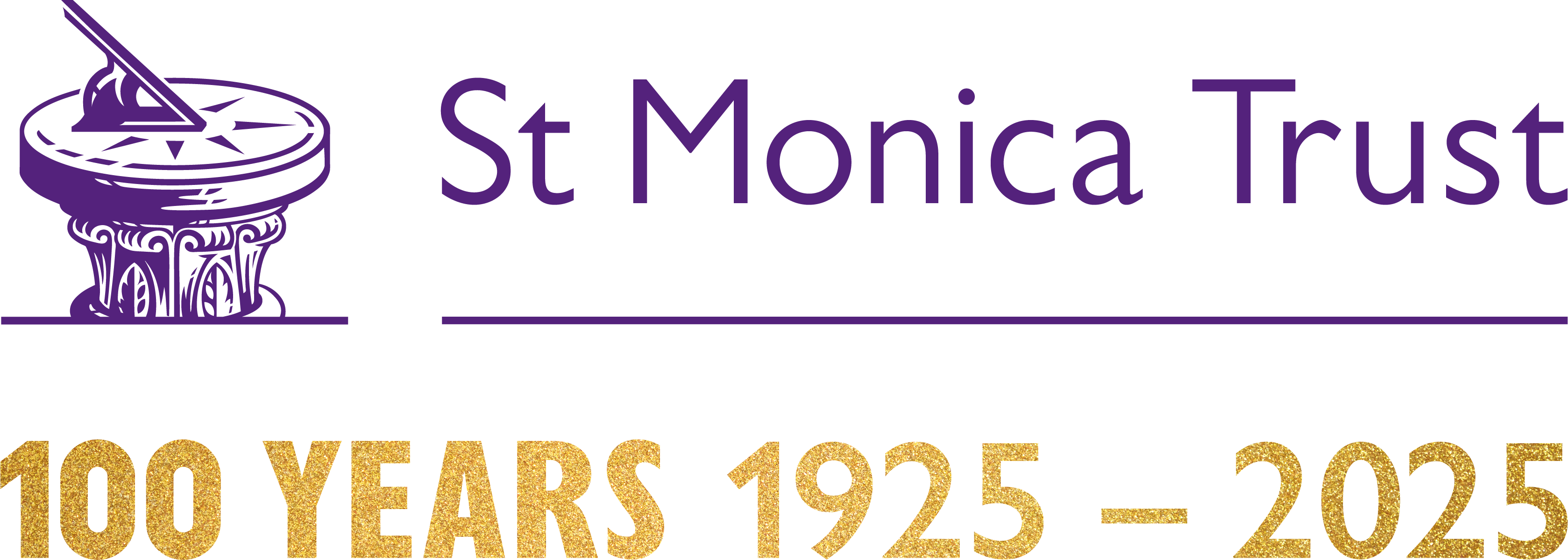
Exercising as an Older Adult - with Lee Scott
We’ve all heard it said that our later years are a time for taking it easy. But what about those of us that want to try something new? With a growing number of age-friendly sports and exercise types available on our doorsteps we chat to retirement community gym manager Lee Scott about picking the right ones for you. Here are his top tips on exercising as an older adult.

Speak to the experts…
First things first. If you’re starting from a point of not doing much exercise, have pre-existing health conditions or any particular health concerns, it may be worth speaking to your GP beforehand. They should be able to help you figure out what will help get you in great shape and what might be best avoided, based on their knowledge of your overall health.
Then, for those of us thinking of joining a gym, it’s worth getting assessed by a personal trainer. When working with our residents we help set some goals and observe while they run through exercises the first couple of times, to make sure everything is on the right track.
Move it our lose it…
It’s a bit of cliché but this principle really does apply. Generally speaking we tend to spend more time seated in our later years and that has all kinds of problematic effects on our health. When left inactive muscles tighten up and deteriorate, joints stiffen and we’re more prone to falls as we age. It can also be a vicious circle - when we do less exercise we often feel we have less energy, meaning we’re less likely to want to head out for that walk and less able to take part in the things we enjoy.
If you want to stay pain-free, reduce your risk of mental illness, and be able to go out and stay independent well into old age, you're advised to keep moving.
NHS website
The NHS recommend that adults over 65 who are generally fit and have no health conditions limiting mobility should take part in a minimum of 150 minutes of moderate aerobic exercise and two or more sessions of strength-based exercise a week. Alternatively they suggest exercise plans incorporating a smaller amount of vigorous aerobic exercise, again combined with strength training, which you can read about in full here.
Sounds like a lot, doesn't it? Well, Rome wasn’t built in day and it all adds up - it’s important to start small and gradually build up the amount of exercise you do when you feel ready. You’ll start to notice the difference from just doing a little exercise and a few times a week.
Finding your balance...
We recently took part in a health and fitness programme run by the University of Bath and the NHS National Institute for Health Research. The REACT (Retirement in Action) programme took place across three of the St Monica Trust's retirement villages, with sessions twice a week for 6 months and once a week for 6 months, after which participants were encouraged to exercise independently. It was so popular that 90% of those involved wanted to continue with some form of regular exercise when it ended. Here's what we learned.
You really don't need lots of gym equipment to make a real difference to your strength, balance and mobility. Just a few simple body weight exercises focusing on legs and core can help us with day-to-day tasks that might otherwise be a struggle as we get older. Why not give some of the following a go a few times a week?
- Seated marching
- Heel lifts
- Standing heel to toe static hold
- Straight leg raises
- Shoulder rolls
- Overhead stretching
- Tap and clap
- Seated abdominal exercises
- Pelvic floor exercises
We can all do something...
Seated exercise classes can be a great way of getting active if you have mobility issues or are looking to boost your confidence when starting from scratch as an older adult. There are a whole range to choose from - from seated pilates to seated yoga and more. We offer these regularly at several of our retirement villages, but there are lots of these classes popping up in gyms and community centres across the country.
If you’re looking for exercise that’s kind on the joints while helping you build strength and mobility then try swimming. It gives you all the resistance of the water without the impact of your knees, ankles and so on. And if you’re nervous about getting back in the water take a buddy with you for support and make sure to use a pool that’s shallow enough for you to get the benefit from walking against the resistance of the water too.
Enjoy it...
There’s more to well-being than gyms and swims. Recreational sports activities can be enormously beneficial whatever our age and are a fantastic way of building relationships in your community too. If you enjoy the whole experience and make friends then you’re more likely to keep going with your exercise. It's a win win.
We recommend a buddy system to everyone that uses the gym and pool here in our retirement communities, partly as a safety measure but also because it’s great to have the encouragement of another person cheering you on. Once you have confidence in a group setting the world’s your oyster. Bring on that mountain climbing expedition...

Illustration of Sandford Station retirement village in North Somerset. Image by Carys Tait.
Get Active at Sandford Station
Sandford Station is a rural retirement village in North Somerset, nestled in the Mendip Hills. Its dedicated activities coordinator and on-site gym instructor coordinate a wide variety of indoor and outdoor activities each week - from archery to swimming, pilates and more. You can find out more about Sandford Station by visiting our village page.
To explore age-friendly sports and exercise classes across the Bristol area take a look at Active Ageing Bristol's new Physical Activity Directory.
